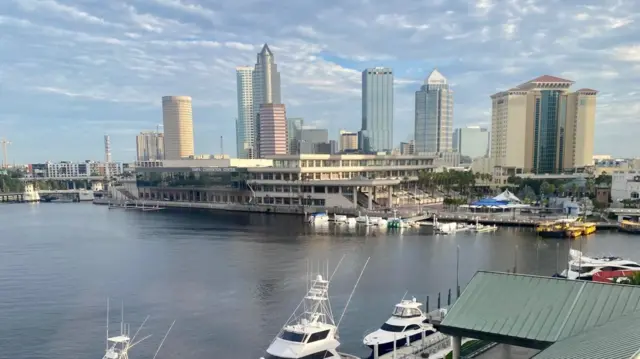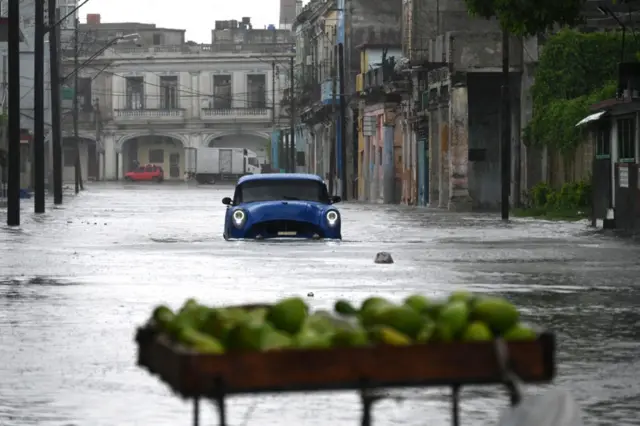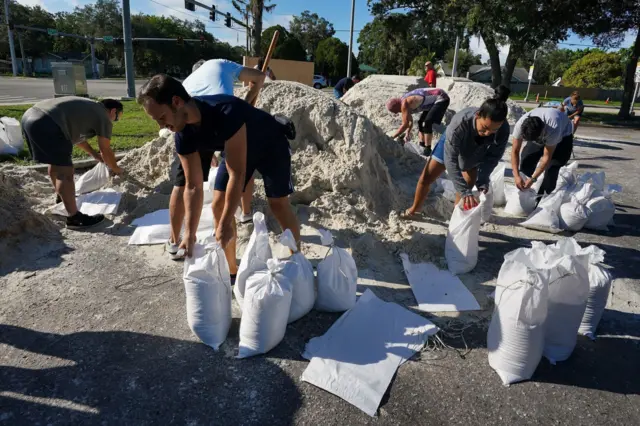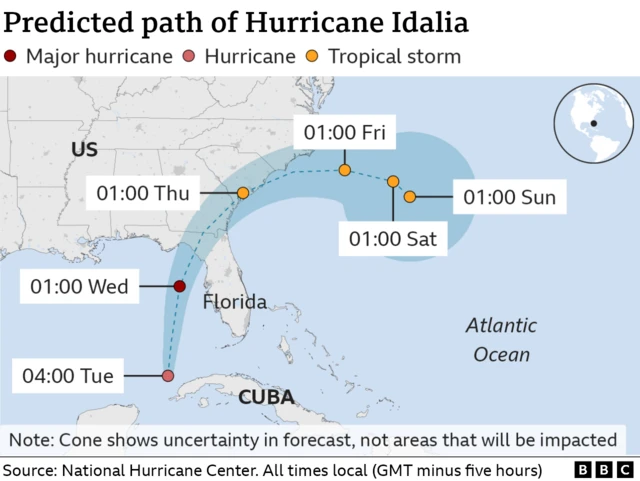Storm surge could cause 'catastrophic damage'published at 18:32 BST 29 August 2023
The National Weather Service (NWS) is warning that "catastrophic damage" will likely be caused by a storm surge expected across parts of Florida's coastline.
A storm surge is a change in sea level that is caused by a storm. Large waves can be generated by the strong winds, pushing high-levels of water inland.
They can lead to extensive flooding.
Posting on social media, external, the NWS says an "inundation of 10 to 15ft (3.05m to 4.57m) above ground level and destructive waves" will occur somewhere between Aucilla River and Yankeetown.
The NWS also warns that "life-threatening" storm surges will occur elsewhere along portions of the Gulf Coast.
"Residents in these areas should follow any advice or evacuation orders given by local officials."
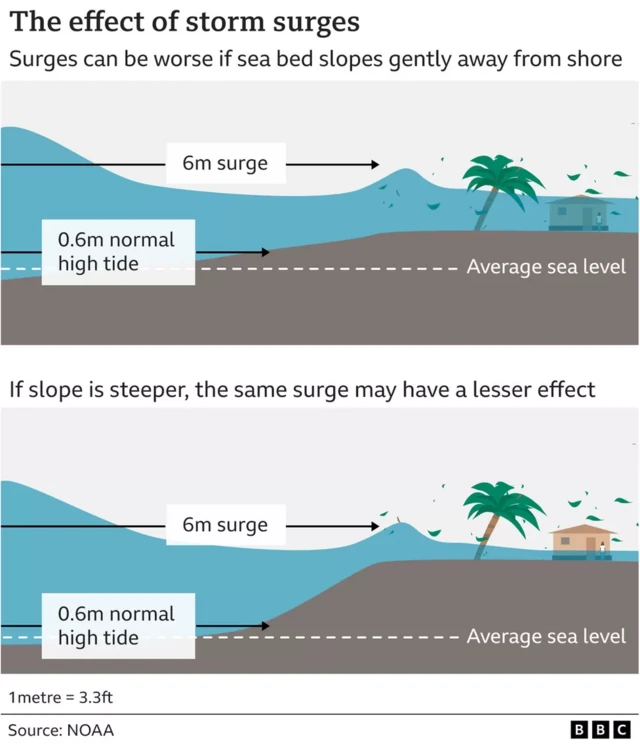 Image source, .
Image source, .
